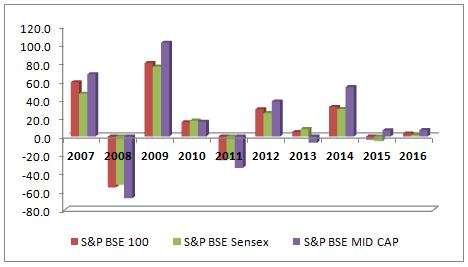Take any fund. Other than the returns numbers, which draw your immediate attention, look at the type of fund it is. Any portfolio recommendation or review will always mention the types or the categories of funds that make up the portfolio. Knowing what the category the fund belongs to is important, which we have explained earlier in this column. Now, we are going to dig down into each category and explain what it is and the role it plays in your portfolio. This week, it is largecap funds.
What is a largecap fund?
A large-cap fund is an equity fund that invests most of its portfolio in large-cap stocks. All stocks are bucketed into large-cap, mid-cap, small-cap, and micro-cap based on their market capitalisation. Market cap is the product of the price of a company’s share and the total number of shares it has. For example, if a company has 100 shares and its market price is Rs 25, its market cap is Rs 2,500.
 The nature of a large-cap stock is as follows – the company is large and established, it is among the dominant players in its industry, it has strong product lines and high revenues. Usually, this translates into more clout for funding, sourcing raw material, and product pricing.
The nature of a large-cap stock is as follows – the company is large and established, it is among the dominant players in its industry, it has strong product lines and high revenues. Usually, this translates into more clout for funding, sourcing raw material, and product pricing.
A largecap fund focuses on such companies and stocks. Each has their own definition of what a large-cap stock is. Some term it as the stocks making up the BSE 100 index. Others may say it’s the top 100 stocks when arranged according to market cap. At FundsIndia, we define a large-cap stock as one with a market cap of over Rs 20,000 crore. Since market cap changes as prices change, we review this definition on a quarterly basis.
Why invest in largecaps?
Recall the nature of large-cap stocks discussed above. Because these companies are established and large, they are less vulnerable to slowdowns or shocks. This makes them steadier performers.
For example, consider Hindustan Unilever, a large-cap stock with a marketcap of Rs 184,309 crore. It has a very large product basket – it has soaps, detergents, skin care, hair care, oral care, coffee, tea, and packaged foods. Within each product type, it has several brands at several price points. If one category or brand sees lower sales, the other categories can make up for it. It has thousands of stockists and distributors across rural and urban areas. It will thus be able to weather a cutback in consumer spending better than a smaller company that does not have as diverse a presence. It will not find it very hard to raise funds for any purpose, while a smaller company can either find it hard and/or expensive. At the same time, this wide presence and large size leaves it limited room to scale up and enter new areas. A smaller company could thus grow faster because it is smaller, it can enter new markets, launch new products and so on.
During market downtrends, large-cap stocks (and funds, by extension) do not fall as much as their smaller counterparts do. Of course, during market up trends, they may not rise as much. But this is not always the case. Certain large companies may have a dominant market share and may outperform across markets.
 Whether they outperform in rallies or not, they do contain volatility better in economic and market downturns. This is because they are better placed, financially and in terms of market share to take short-term hits better than smaller companies. They provide reasonable returns without sharp swings. The graph shows how large-cap and midcap indices performed each year. Notice how both falls and rises are lower for the Sensex and the BSE 100.
Whether they outperform in rallies or not, they do contain volatility better in economic and market downturns. This is because they are better placed, financially and in terms of market share to take short-term hits better than smaller companies. They provide reasonable returns without sharp swings. The graph shows how large-cap and midcap indices performed each year. Notice how both falls and rises are lower for the Sensex and the BSE 100.
All funds are not equal
A largecap fund need not put its entire portfolio in large-cap stocks. It puts most of it in large-cap stocks. The remaining portion goes into smaller or mid-cap stocks depending on market conditions. This is in order to boost performance in rising markets when mid-caps run up. Funds can put as much as 15-20% of their portfolio in mid-caps but be classified as a large-cap fund. There are very few truly large-cap funds that put the entirety of their portfolio in large-cap stocks. This makes such funds less risky than those that invest part of their portfolio in mid-caps.
One way to check if a fund can move into midcaps is by looking at their benchmarks. If the benchmark is the BSE 200 or Nifty 200, then the fund could have mid-cap holding from time to time. Those that have the Nifty 50 or the Sensex as benchmarks could have very low to no mid-caps. Those with a BSE 100 index could be somewhere in-between.
Portfolio role
The lower volatility of largecap funds provides stability. For any long-term portfolio, having a large-cap fund is necessary no matter how high your risk appetite is. Having no large-cap fund can subject your portfolio to sharp swings that hurt returns over the long term.








Quite informative interesting reading
Quite informative interesting reading